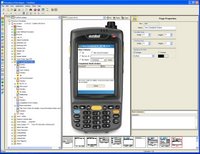There are always reasons and/or business justifications for wanting to mobilize a business process. Something has motivated the individual or company to march down the path of mobilization. So when considering whether to buy or build a mobile solution these additional factors should be considered:
- Tolerance for risk
- Opportunity Costs
- Expected ROI
- Competitive Advantages
Let's briefly discuss each of these considerations.
Tolerance for risk - are you willing to risk attempting to develop an enterprise mobile solution for the first time (If your team is an experienced mobile development team, then you can ignore this point)? It can be done, but the first time requires a lot of thought, design meetings, trial and error, debugging and above all else - time. What if the design can not scale? What if the synchronization engine that your developer made is too slow? What if after 8 months the system is still only half complete and full of bugs?
Opportunity Costs - this is one of the most common issues that IT managers discuss with me. Most often IT departments are already over worked and behind schedules. The last thing they need is a another new project added to their list and schedule. IT managers are already annoyed at their current workload, and now the business unit is asking them to develop a completely new and unproven mobile solution? The IT manager is not happy. All they can think of is the headaches this will cause.
The questions the IT managers ask the business unit managers are:
- What project should I delay in order to insert this new project into the schedule?
- Who is going to support it?
- Can I hire more developers to develop and support a mobile solution?
These questions then force the business unit manager to go back to senior management and ask them to re-prioritize other IT projects in favor of the mobile solution. So now all the business unit managers get involved and defend their particular interests.
The opportunity costs can be considerable if you want to code/program the complete mobile application yourself internally.
Expected ROI - if the business unit requesting the mobile solution expects to save $53,000/month by mobilizing their work order management system, then every month that passes without the mobile solution being deployed wastes $53,000. So if coding your own solution from scratch takes 3 months longer than using a RADs-ME tool like MobileDataforce's PointSync, you must consider the $159,000 you just wasted.
Competitive Advantages - we have developed many mobile solutions for companies that are considered competitive advantages. Solutions that provide new and unique revenue opportunities for our customer. We have seen this in the automotive industry, the beef industry, the concert and event promotion industry and many more.
If the business justification of the mobile solution is motivated by a competitive advantage, then the length of time it takes to code a mobile solution from scratch must be considered. What if the mobile solution takes 5 months to code from scratch, but only 5 weeks with a RADs-ME tool like PointSync? The associated competitive advantages and disadvantages must be considered in the equation.


